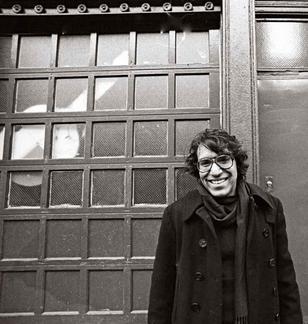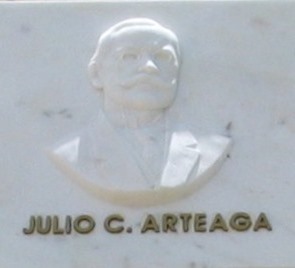Félix Manuel "Bobby" Rodríguez Capó was a Puerto Rican singer and songwriter. He usually combined ballads with classical music and was deeply involved in Puerto Rican folk elements and even Andalusian music, as to produce many memorable Latino pop songs which featured elaborate, dramatic lyrics.

Jesús Colón (1901–1974) was a Puerto Rican writer known as the Father of the Nuyorican movement. An activist and community organizer, Colón wrote poetry and stories about his experiences as an Afro-Puerto Rican living in New York.

Pura Teresa Belpré y Nogueras was an Afro-Puerto Rican educator who served as the first Puerto Rican librarian in New York City. She was also a writer, collector of folktales, and puppeteer.

Stateside Puerto Ricans, also ambiguously known as Puerto Rican Americans, or Puerto Ricans in the United States, are Puerto Ricans who are in the United States proper of the 50 states and the District of Columbia who were born in or trace any family ancestry to the unincorporated US territory of Puerto Rico.

JesúsAbraham "Tato" Laviera was a Latino poet and playwright in the United States. Born Jesús Laviera Sanches, in Santurce, Puerto Rico, he moved to New York City at the age of ten, with his family, to reside in the Lower East Side. Throughout his life he was involved in various human rights organizations, but was best known as a renowned Nuyorican poet. An obituary for NBC Latino describes him as "one of the greatest representatives of the Nuyorican movement."

Jack Agüeros was an American community activist, poet, writer, and translator, and the former director of El Museo del Barrio.
Sandra María Esteves is a Latina poet and graphic artist. She was born and raised in the Bronx, New York, and is one of the founders of the Nuyorican poetry movement. She has published collections of poetry and has conducted literary programs at New York City Board of Education, the Caribbean Cultural Center, and El Museo del Barrio. Esteves has served as the executive director of the African Caribbean Poetry Theater. She is the author of Bluestown Mockinbird Mambo and Yerba Buena. She lives in the Bronx.

Gem Spa was a newspaper stand and candy store located on the corner of St. Mark's Place and Second Avenue in the East Village neighborhood of Manhattan, New York City. It opened under another name in the 1920s, and was renamed in 1957. It was open 24 hours a day, and was known for being commonly considered to be the birthplace of the authentic New York City-style egg cream, which its awning described as "New York's Best."

Casa Amadeo, antigua Casa Hernández is the oldest, continuously-occupied Latin music store in New York City, and the Bronx, having opened in 1941.
Juan Sánchez, also Juan Sanchez is an American artist and educator. He is an important Nuyorican cultural figure to emerge in the second half of the 20th century. His works include photography, paintings and mixed media works.
El Centro, the Center for Puerto Rican Studies or Centro de Estudios Puertorriqueños, is a university-based research institute whose mission is to produce, facilitate, and disseminate interdisciplinary research about the experiences of Puerto Ricans in the U.S. and to collect, preserve, and provide access to archival and library resources documenting the history and culture of Puerto Ricans. To complement these core activities, Centro sponsors a year-round program of educational and cultural activities. Since 1983, Centro has been housed at Hunter College of the City University of New York (CUNY).
Bartolo Alvarez was a Puerto Rican musician and entrepreneur best known for establishing Casa Latina in East Harlem, New York in 1948. This record store still stands today, and was the first Spanish-language music shop opened in the United States. He was the father of five children.

Félix V. Matos Rodríguez is a Puerto Rican academic administrator, currently the eighth Chancellor of The City University of New York (CUNY), the largest urban public university system in the United States. A historian, professor, author and noted Puerto Rican scholar, Matos Rodríguez previously served as president of two CUNY colleges and as a cabinet secretary of the Puerto Rico Department of Family Affairs. He assumed the post of Chancellor of CUNY on May 1, 2019, becoming the first Hispanic to lead the university.
Diana Ramírez de Arellano was an American poet, literary critic and professor of Spanish language and literature. A former Poet Laureate of Puerto Rico, she taught at the City College of New York for many years. In 1963, she founded the Ateneo Puertorriqueño de Nueva York, a cultural center for Puerto Ricans in New York.

Julio C. Arteaga was a Puerto Rican musician and composer of danzas.
The Center of Puerto Rican Art was a print workshop and exhibition venue established by Lorenzo Homar, Rafael Tufiño, José Antonio Torres Martinó, Félix Rodríguez Báez and Julio Rosado del Valle in 1950.
Ana Celia Zentella is an American linguist known for her "anthro-political" approach to linguistic research and expertise on multilingualism, linguistic diversity, and language intolerance, especially in relation to U.S. Latino languages and communities. She is Professor Emerita of Ethnic Studies at the University of California, San Diego.
Juanita Arocho (1910–1998) was a Puerto Rico-born immigrant known for her community activism and journalism in East Harlem, also known as Spanish Harlem, in New York City.

Carmen Pabón del Amanecer Jardín, also known as Carmen's Garden and El Bello Amanecer Boriqueño Garden, is a 4,635-square-foot (430.6 m2) community garden at 117 Avenue C, in the East Village of Manhattan, New York City. Carmen Pabón del Amanecer Jardín is named after Carmen Pabon, a Lower East Side poet and gardener who died in 2016 at the age of 95.

Dr. Manuel A. Morán is a Puerto Rican actor, singer, writer, composer, puppeteer, theater and film director and producer. He is the Founder and Artistic Director of the Latino Children’s Theater, Teatro SEA,.











